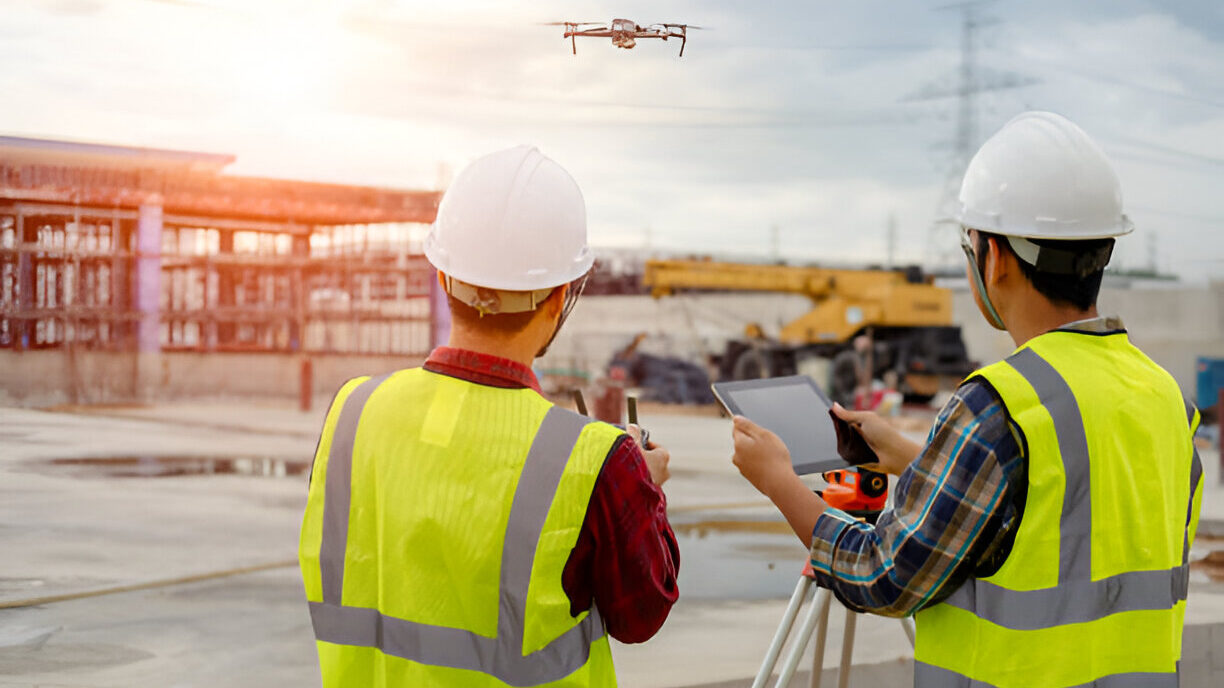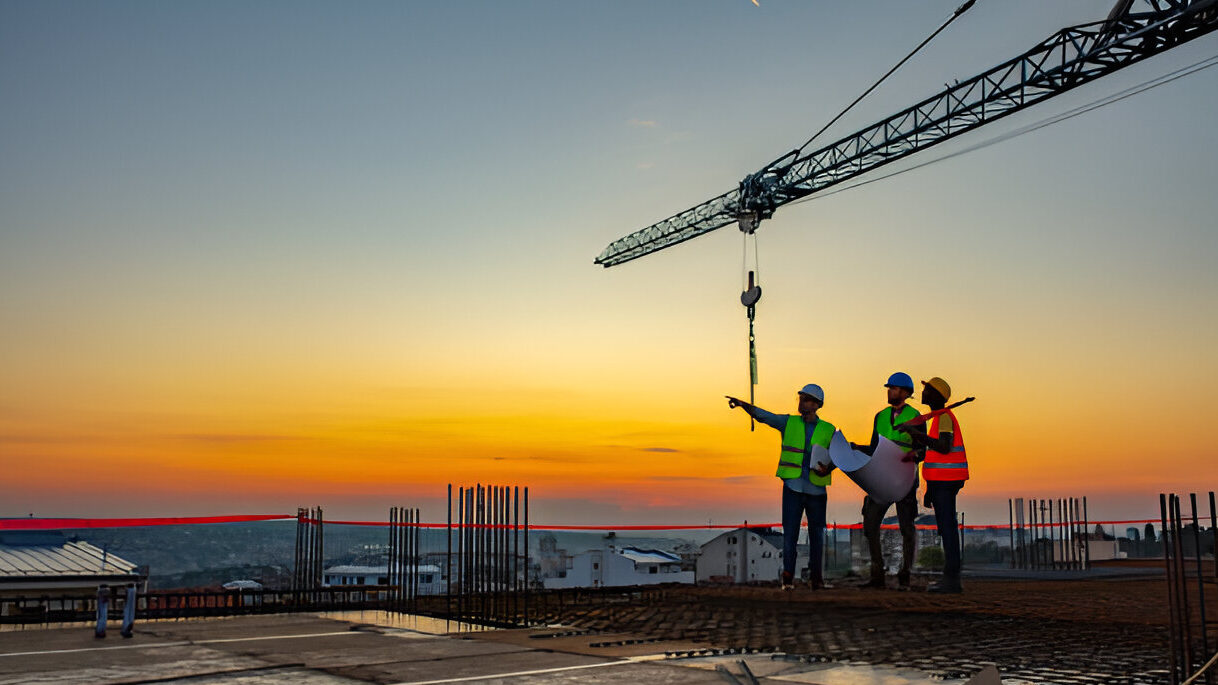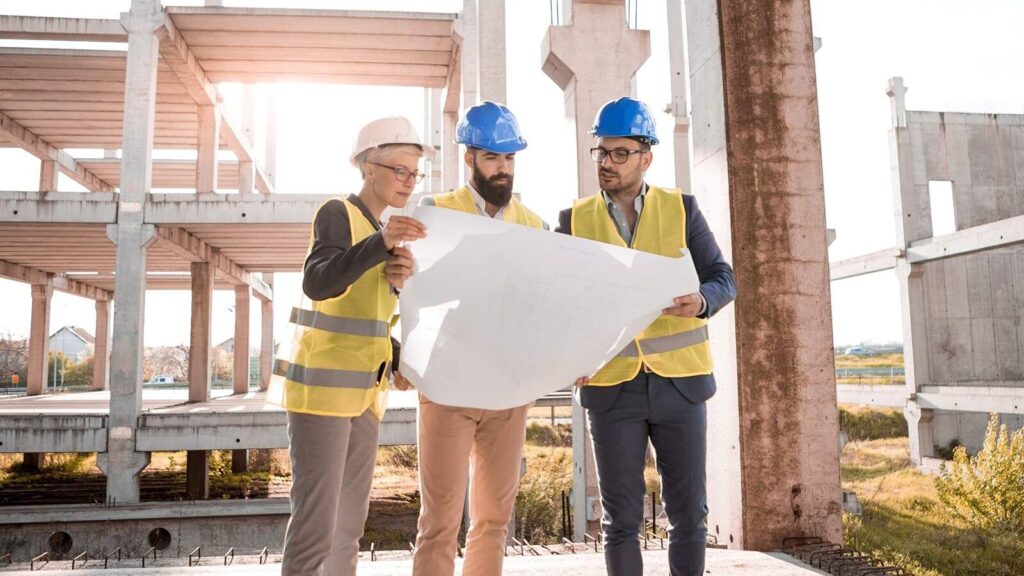
Ensuring safety at construction sites is not just a regulatory requirement; it’s a moral and practical imperative. Construction site safety inspections play a vital role in safeguarding workers and maintaining smooth operations. According to OSHA, 20% of private industry worker fatalities in 2020 were in construction. These alarming figures highlight the importance of proactive safety measures.
What Are Construction Safety Inspections?
Construction safety inspections are systematic evaluations conducted to identify and mitigate potential hazards on a construction site. These inspections are carried out by supervisors, safety officers, or health and safety representatives to ensure compliance with safety standards and regulations.
During inspections, safety officers walk through the job site, observe ongoing work, document safety violations, and implement corrective actions before accidents occur. Key aspects include:
- Planning and Training: Daily pre-task planning helps identify and eliminate hazards in advance. Continuous training ensures workers stay updated on safety protocols and the latest personal protective equipment (PPE).
- Frequency of Inspections: Informal inspections should occur daily, while formal inspections are conducted weekly by site managers and monthly by health and safety representatives. Involving leadership underscores their importance and fosters a culture of safety.
By addressing hazards proactively, construction safety inspections ensure a safer working environment, reduce accidents, and improve operational efficiency.
7 Tips to Avoid Hazards
In this article, we outline seven actionable tips for conducting effective construction site safety inspections to avoid hazards and create a secure working environment.
1. Understand the Importance of Safety Inspections
Construction safety inspections are more than a formality. They prevent accidents, injuries, and project delays. By addressing risks before they escalate, safety inspections save lives and resources. A safe site improves morale, enhances productivity, and boosts a company’s reputation.
Regular inspections ensure compliance with safety regulations. They also minimize liability for lawsuits and prevent costly penalties. Inspections should identify hazards, suggest corrective actions, and reinforce a culture of safety.
2. Develop a Comprehensive Safety Checklist
A detailed checklist is an essential tool for effective inspections. It ensures all safety aspects are thoroughly examined, leaving no room for oversight. Key elements of a construction site safety inspection checklist include:
- Personal Protective Equipment (PPE): Verify that workers have appropriate PPE and that it is in good condition.
- Tools and Equipment: Ensure tools are functioning correctly and suited for their tasks.
- Fall Protection: Confirm that fall protection systems are correctly installed and used.
- Electrical Safety: Inspect cords, wiring, and temporary lighting for compliance.
- Scaffolding: Check that scaffolds are secure, stable, and properly anchored.
- Signage: Confirm that warning signs are visible and understandable.
Use the checklist consistently to avoid overlooking critical safety elements. Tailor it to the specific requirements of each site.
3. Conduct Regular Inspections
Safety inspections should be an ongoing process. Conduct informal inspections daily and formal ones weekly or monthly. Supervisors must routinely evaluate the site for hazards, while health and safety representatives should conduct periodic detailed reviews.
Frequent inspections not only identify risks but also demonstrate a company’s commitment to safety. Engaging project managers and leadership in these processes further underscores their significance.
4. Emphasize Training and Awareness
Training is critical for maintaining safety standards during construction site inspections. Workers must be trained in the latest safety protocols and personal protective equipment (PPE) usage. Regular sessions help reinforce safety knowledge and adapt to evolving regulations, ensuring compliance during construction site inspections.
Encourage open communication where workers feel comfortable reporting hazards or unsafe practices. This collaboration fosters a proactive approach to risk mitigation and contributes to more effective construction site inspections.
5. Plan Ahead to Mitigate Risks
Effective planning prevents accidents. The construction safety jobsite inspection process should include daily pre-task planning sessions to identify and eliminate potential hazards. Evaluate the day’s activities, pinpoint risks, and take preventive measures. For example, ensure scaffolding is secure and fall protection systems are operational before starting work.
Good planning also considers operational factors such as workflow organization and pace. This comprehensive approach minimizes safety risks and ensures smoother operations.
6. Leverage Technology for Efficient Reporting
Technology simplifies the construction site safety inspection process by streamlining documentation, reporting, and communication with stakeholders. Tools like ArchiSnapper enable inspectors to:
- Capture and annotate photos of hazards
- Record observations in real-time
- Generate professional reports with branded layouts
- Assign corrective actions and set deadlines
By leveraging these digital solutions, inspectors can save time, enhance report accuracy, and easily track progress, ensuring better accountability and improved safety management on-site.
7. Reinforce Positive Behavior
Safety inspections should highlight good practices as well as areas for improvement. Acknowledge workers’ adherence to safety protocols and address resolved hazards in reports. Positive reinforcement encourages continued compliance and fosters a culture of safety.
Recognizing achievements boosts morale and motivates workers to maintain high safety standards. Combine constructive feedback with appreciation to achieve the best results.
The Benefits of a Safe Construction Site

Maintaining a safe construction site has numerous advantages, including improved worker morale, enhanced project outcomes, and compliance with regulations. Here are the top benefits:
1. Improve Worker Safety and Retention
A safe work environment ensures workers return home unharmed. Companies prioritizing safety retain their workforce and attract skilled workers, especially in times of labor shortages.
2. Enhance Your Reputation
A robust safety program elevates a company’s reputation, making it a preferred choice for developers and clients. Safety-conscious operations reduce liability risks and foster trust in the marketplace.
3. Keep Operations Moving
Safety measures minimize disruptions, prevent project delays, and ensure timely completion. Workers in safe environments are more productive, and reduced accidents lead to lower insurance premiums and fewer penalties.
4. Comply With Regulations
Adhering to safety regulations, such as those mandated by OSHA, protects companies from legal consequences. Proper documentation of inspections demonstrates compliance and proactive safety measures.
Investing in a safe construction site is not just ethical but also a sound business strategy, enhancing overall project success.
Best Practices for Safety Inspection Site Visits

Conducting safety inspection site visits effectively requires a thorough approach and attention to detail. Here are some best practices:
- Focus on Immediate Hazards: Address any critical safety concerns on the spot to prevent accidents.
- Shut Down Unsafe Equipment: Halt the use of equipment that cannot meet safety standards until repaired or replaced.
- Be Methodical: Inspect every aspect of the site, looking up, down, and inside structures. Avoid a superficial “once-over” approach.
- Involve Operators: Ask operators to demonstrate equipment usage to identify potential safety gaps.
- Record Observations Promptly: Document findings immediately to ensure no detail is overlooked.
- Take Photos: Visual records provide clarity and can be valuable for addressing issues and maintaining safety standards.
- Engage Workers: Encourage open discussions about potential hazards and involve workers in safety improvements.
By following these best practices, site inspections can significantly enhance safety and reduce risks on construction projects.
Construction Site Inspection Checklists

Checklists are essential tools for ensuring thorough construction site inspections. A well-designed checklist helps identify hazards systematically, leaving no room for oversight. Key elements to include in a construction safety checklist are:
- Personal Protective Equipment (PPE):
- Are all workers equipped with the correct PPE?
- Is the PPE in good condition?
- Tools and Equipment:
- Are all tools functioning correctly?
- Are the right tools being used for specific tasks?
- Fall Protection Methods:
- Are fall protection measures in place and properly installed?
- Protective Devices and Signs:
- Are safety curtains and barriers in use where needed?
- Are warning signs clear and visible?
- Electrical Safety:
- Are cords safely positioned and insulated?
- Is lighting adequate and temporary electricity securely installed?
- Scaffolding:
- Are scaffolds securely connected and tied to the structure?
Using a comprehensive checklist ensures that no critical safety element is overlooked, ultimately creating a safer and more efficient work environment.
Conclusion
Construction site safety inspections are indispensable for preventing hazards and ensuring smooth project execution. By understanding their importance, using detailed checklists, conducting regular inspections, emphasizing training, planning ahead, leveraging technology, and reinforcing positive behavior, companies can create safer worksites.
A proactive approach to safety not only protects workers but also enhances productivity, reputation, and financial performance. Make safety a priority—because every worker deserves to go home safely at the end of the day.
At Apex Contractors Inc., we prioritize safety in every project we undertake. Trust us to provide thorough and effective construction site inspections. Connect with us on Facebook and Instagram for the latest updates and tips on ensuring a safe and productive construction environment.
